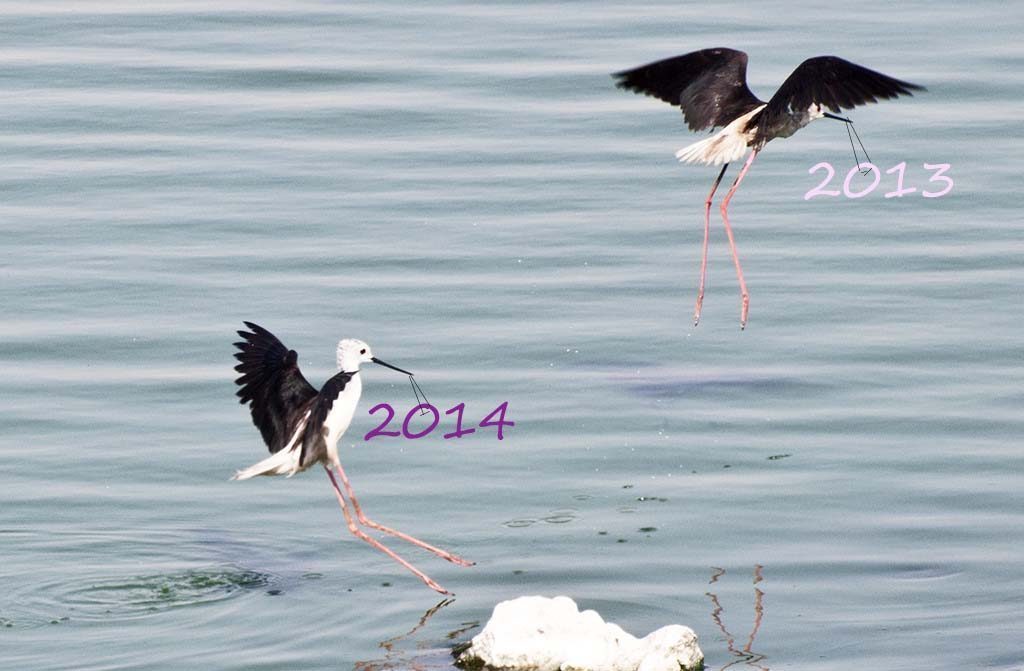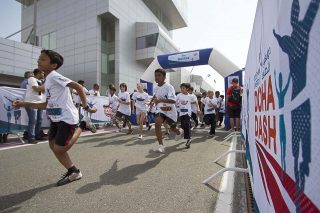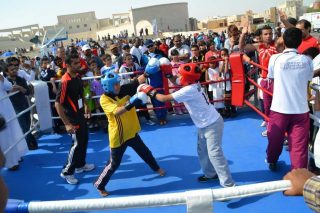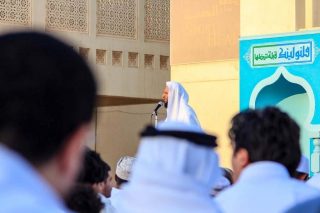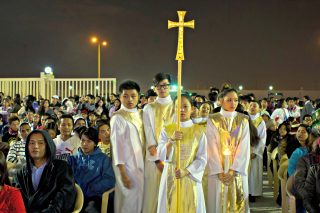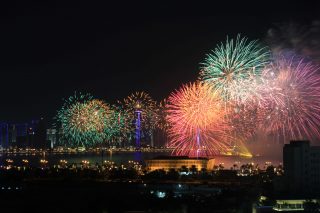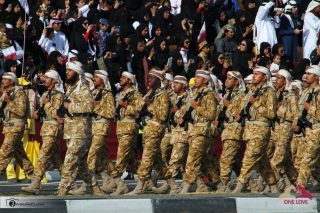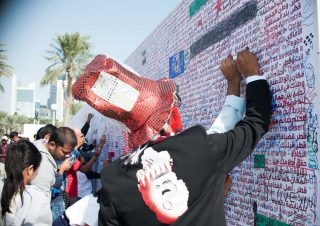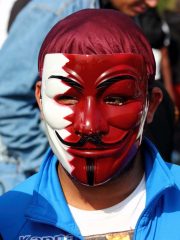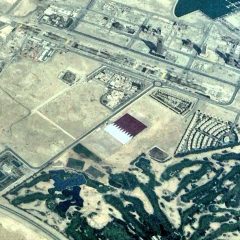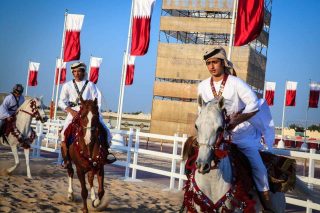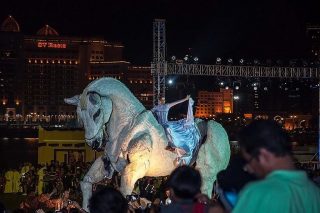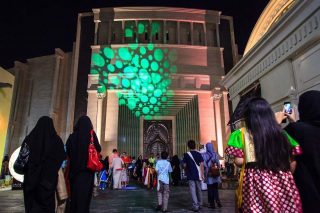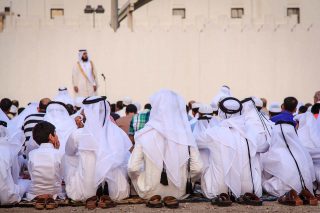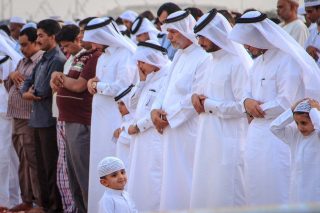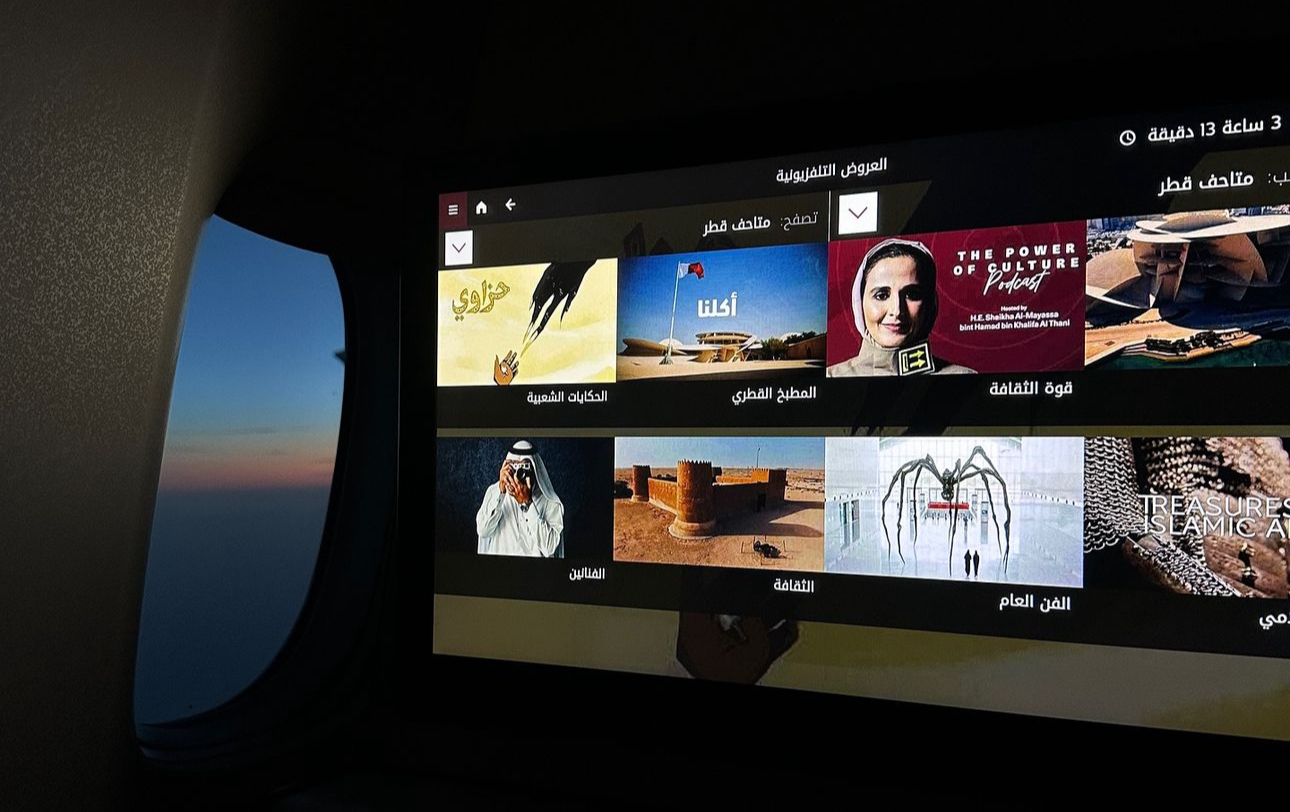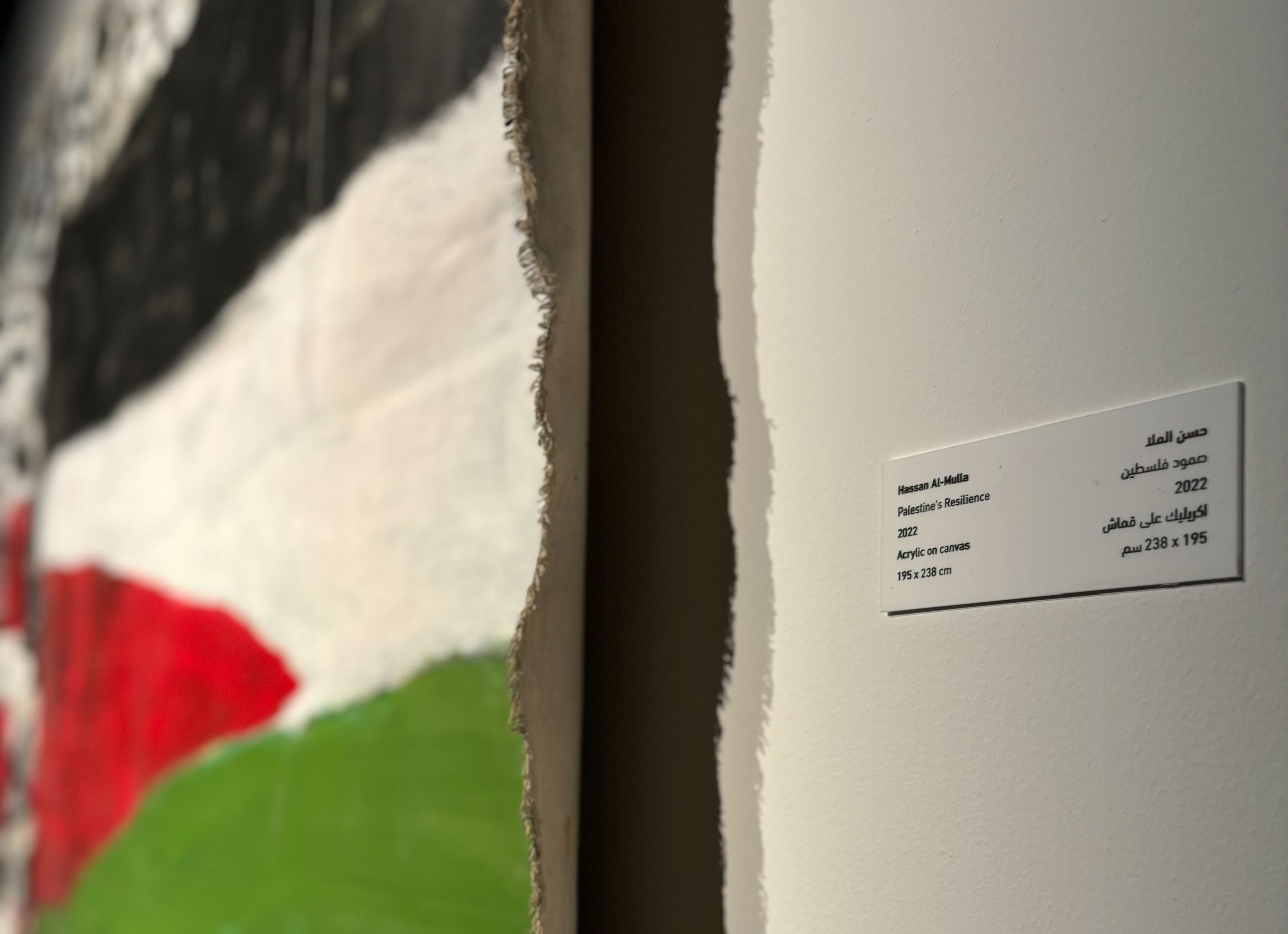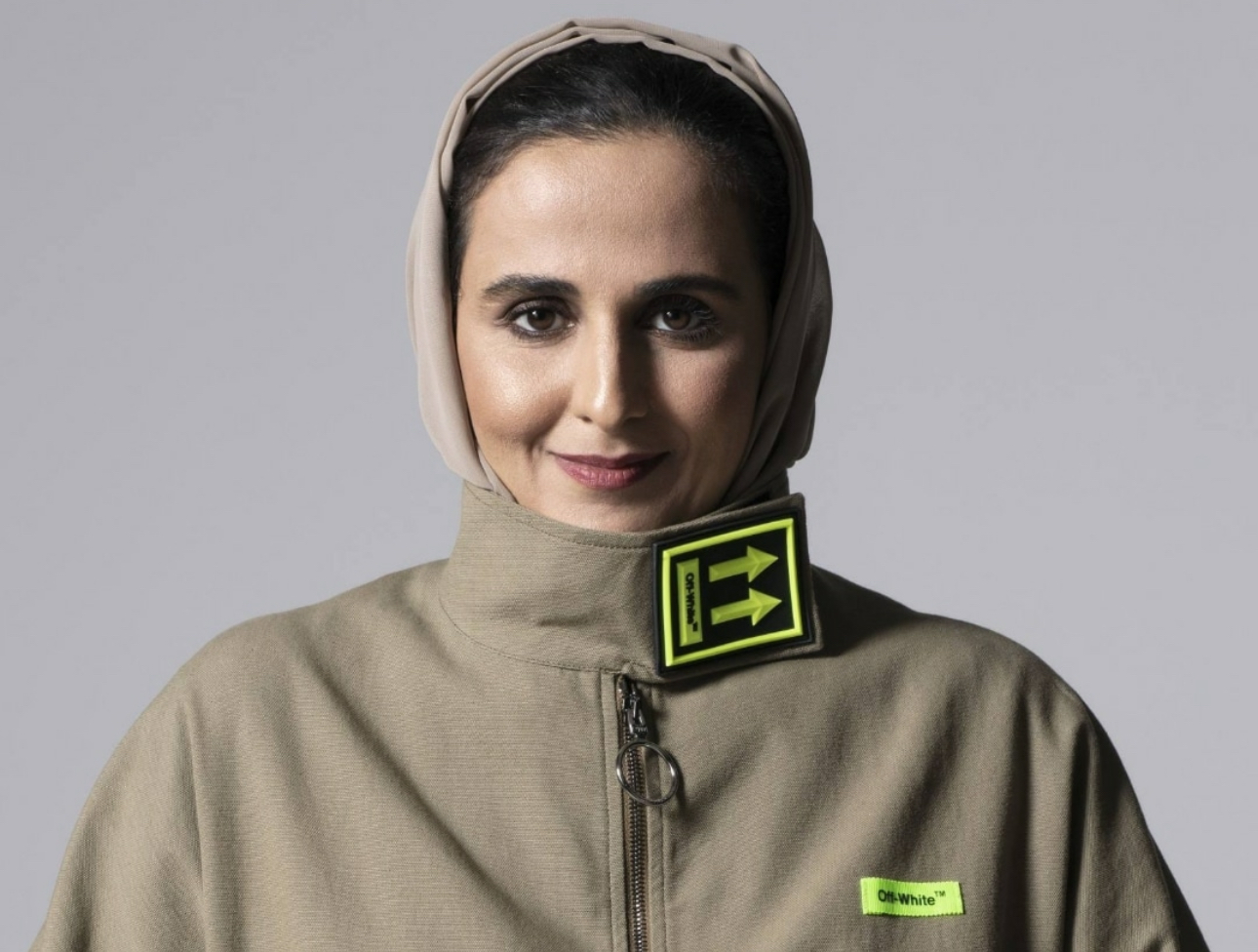
The year 2013 was likely a particularly memorable one for Qatar residents, who witnessed the ascendency of a new leader, found the country in the international spotlight over labor conditions and saw the nation strain to accommodate some 200,000 more people.
Here are some of the top stories, or themes, that dominated the year’s headlines.
[ubergrid id=25502]A new Emir

Sheikh Hamad bin Khalifa Al Thani shocked the Arab world in June when he peacefully abdicated power to his fourth son, Sheikh Tamim.
For all intents and purposes, the transition was smooth. The new Emir, who at 33 is the youngest leader in the region, had already been managing much of the country’s domestic affairs, including the education, finance and sports sectors. In his first and subsequent public addresses, he has vowed to hew to the same vision for Qatar that was set out by his father.
Also in June, Qatar saw the exit of its longtime, outspoken Prime Minister/Foreign Minister, Sheikh Hamad bin Jassim Al Thani, who also lost his post as head of Qatar’s sovereign wealth fund.
Analysts postulated that “HBJ,” who hasn’t been heard from publicly since leaving his posts over the summer, was forced out because Qatar wanted to pursue a quieter foreign policy. Others assert that his presence posed a threat to the new Emir’s authority.

In his stead, Sheikh Abdullah bin Nasser bin Khalifa Al Thani was named both Prime Minister and Interior Minister, making him one of the most powerful people in the country. And Dr. Khalid bin Mohamed Al-Attiyah, formerly the minister of state for foreign affairs, was confirmed as the new Minister of Foreign Affairs.
Additionally, Ahmad Al Sayed was appointed the new CEO of the Qatar Investment Authority. The former chief executive of Qatar Holding, QIA’s direct investment arm, was widely seen as HBJ’s protege.
A shakeup in the Cabinet also followed the government transition, with the creation of several new ministries.
Finally, a byproduct of the transition was the postponement of legislative elections, which were promised by the Father Emir in 2011, but put on hold his last day as ruler, when he issued the decision to renew the Advisory Council’s role for another three years.
Building up Qatar

With the 2022 World Cup looming in the not-so-far future, efforts to remake Doha and the surrounding areas got well underway this year, as several roadwork and construction projects were launched.
That includes the conversion of eight roundabouts in and around the Corniche into signalized intersections, which caused hellish backups for a few months, but now seems to have improved traffic in the area.
During that time, residents bid adieu to the iconic Oryx atop of the roundabout of the same name, as well as the sweeping arch that defined Rainbow Roundabout, from which traffic has been rerouted for the next two years as work on the Lusail Expressway continues.

Elsewhere in Qatar, the first World Cup stadium project has been announced in Al Wakrah, enabling works have cropped up all over town for the upcoming Qatar Rail projects, and progress is also being made at the upcoming mega Mall of Qatar, which is slated to open in 2015.
Ambitious plans for a new Doha Zoo and Sharq Crossing, a series of underwater tunnels and bridges to connect West Bay, Katara Cultural Village and the new Hamad International Airport, were also announced.
The much-anticipated HIA itself, after many delays, is expected to hold a soft opening this month.
Death of Lauren Patterson

That Qatar is home to one of the world’s lowest crime rates is a fact of pride among many residents, expats and locals alike. So when a young British teacher went missing, and it then emerged that she had been killed and her remains were found smoldering in the desert, shock and horror did not begin to describe the reaction residents felt.
Lauren Patterson, 24, was apparently murdered after leaving a local Doha nightclub in October. Two Qatari men have been arrested in relation to her death, but they have yet to appear in court.
The case stunned many in Doha, and raised concerns among some single women living here, who also pointed to the death of an American teacher in late 2012, Jennifer Brown. The 40-year-old was reportedly killed by a security guard in her building, who is on trial for her murder. That case is expected to be heard in court again this month.
Celebrating Qatar
Qatar does not have many public holidays, but when it does, the occasions are elaborately celebrated. Here’s a selection of photos from 2013’s National Sport Day, both Eids and National Day, as well as other memorable moments.
Forces of Nature

Hot, dusty and …hot, with occasional bouts of cold and rain. Weather in Qatar is usually steady and dependable. But sometimes, strange things can happen. Like rain so torrential, that a waterspout forms, prompting fears of a tornado (it looks like one, but isn’t).
In April, an earthquake hit several hundred miles away, but was so powerful that its aftershocks could be felt in Qatar. Not very much, but enough to get people streaming out of their high-rises, trying to figure out what’s going on.
The “great earthquake of 2013,” as residents joke in Qatar, didn’t cause any injuries, but it did give experts a chance to educate people about earthquake safety. There were no casualties from the waterspout either, though heavy rain did lead to flooding of roads, homes and even Villaggio mall.
Safety in question

As a developing country, Qatar has been working to improve its safety standards, especially after last year’s fatal fire at Villaggio mall. But nevertheless, oversights led to some major mishaps this year, including:
- An apparent underground explosion at a popular gas station (no reported injuries);
- The death of a five-year-old boy who fell into an open manhole;
- A bridge collapse on the Lusail City construction site that injured 18 workers; and
- The mauling of a small boy at a circus by a baby leopard.
Villaggio fire verdict

In response to safety lapses that resulted in the deaths of 19 people at Villaggio mall last year, 13 of them children, a Doha court found four Qataris and one expat guilty of involuntary manslaughter, and ordered them to serve time in prison for their role in the tragedy.
According to the judge handing down the verdict, the chairman of Villaggio mall, its manager, the co-owners of the daycare in which everyone died and the business ministry official who signed off on the nursery’s permit were all liable for what happened.
But Sheikh Ali Bin Jassim Al Thani, Qatar’s Ambassador to Belgium and co-owner of Gympanzee; Iman Al-Kuwari, daughter of Qatar’s culture minister and co-owner and manager of Gympanzee; Abdul Aziz Mohammed Al-Rabban, Villaggio’s Chairman; and Tzoulios Tzouliou, the Manager of Villaggio, have yet to start on their six-year sentences, as the appeals process is ongoing.
Mansour Nasir Fazzaa al-Shahwani from the Ministry of Business and Trade, who was sentenced to five years in jail, also remains out of jail for now.
The appeals court is expected to hear the case this month.
Spotlight on kafala
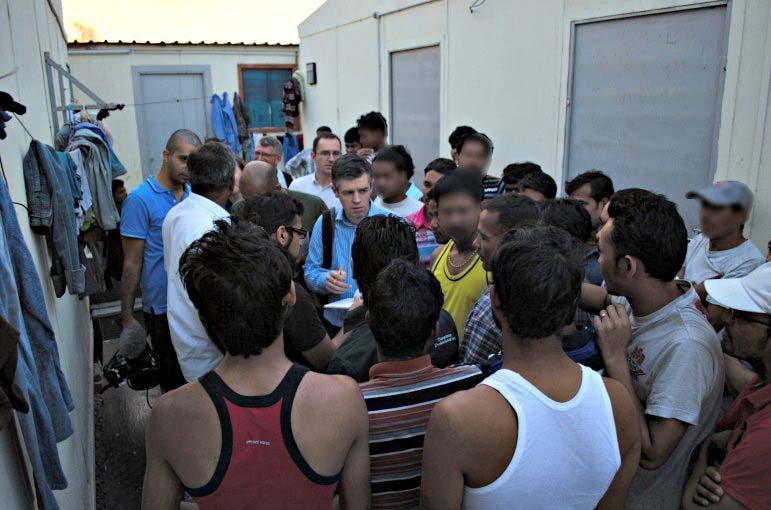
The dismal living and working conditions of Qatar’s low-income construction workers has been well-documented in years past by international human rights organizations. But 2013 was the year that the international media picked up the story.
The issue spread so far and wide that the FIFA Executive Committee was forced to officially discuss Qatar’s labor record, and the UN sent an envoy to document conditions for himself.
The country itself has had a mixed reaction to all the attention. Many called the media coverage a witch hunt, while others expressed relief that the issue was finally out in the open, in hopes that the system would change.
However, the most controversial tenets of the kafala system, under which employers need their sponsors’ permission to leave the country or switch jobs, appear to have widespread support in the local business community, meaning they likely won’t be altered anytime soon.
Focus on art

Qatar made some bold choices this year in terms of art exhibitions. For the past three months, and through Jan. 5, renowned artist Damien Hirst’s largest and first Middle East retrospective is on display at the Al Riwaq Gallery, next to the Museum of Islamic Art.
The exhibition includes one of Hirst’s most shocking pieces – A Thousand Years, which depicts the circle of life by showing live flies and maggots feeding on a severed cow’s head, and an electric bug zapper with a heap of dead flies piled in its metal basin.
Many of Hirst’s pieces revolve around the theme of death intruding on daily life, but while visiting Qatar in October, he unveiled a decidedly less morbid display at the under-construction Sidra Medical and Research Center.

The Miraculous Journey, a collection of 14 sculptures that depict the stages of conception to birth, is slated to be a permanent installation at the upcoming women and children’s hospital. It has been covered up, however, to protect the art from the ongoing onsite construction.
The Qatar Museums Authority had a less successful unveiling of another gleaming piece of artwork this fall – Adel Abdessamed’s Coup de Tête – or “Head Butt.” The sculpture captures the moment when French football player Zinedine Zidane head-butted Marco Materazzi in the 2006 World Cup, and was slated to be a permanent installation on Qatar’s Corniche.
But less than a month after the statue went up, it was moved to the Museum of Modern Arab Art (Mathaf). QMA said the decision was made to join the sculpture with Abdessamad’s other artwork, which is on display at the Mathaf through Jan. 5, and has sparked its own controversy. According to a spokeswoman, the head-butt statue will remain at Mathaf, though it is currently undergoing “conservation work.”
A poet’s verdict

Qatar, like all Gulf states, has a tenuous relationship with both media freedom and freedom of speech.
The test case for this relationship was the appeals trial of Qatari citizen Mohammed “Ibn Al-Dheeb” Al-Ajami, who was convicted at the end of 2012 for “inciting the overthrow of the ruling regime” with poetry. Freedom of speech is guaranteed under Qatar’s constitution, but limited when it jeopardizes national security.
In February, Qatar’s court of appeals reduced Ibn Al Dheeb’s sentence from life in jail, to 15 years behind bars. Qatar’s highest court, the Court of Cassation, upheld that sentence in October, leaving no room for further legal appeals.
At the time, the head of Qatar’s Doha Centre for Media Freedom, Jan Keulen, commented on the “harsh sentence” and a conspicuous lack of local media coverage of the case. “We regret the self-censorship and climate of fear this sentence provokes,” Keulen told Doha News the day after the verdict was released.
DCMF also put out a report earlier this year on media laws in Gulf countries, which painted a picture of tight media control in Qatar.
But the report also made clear that Qatar doesn’t necessarily carry out heavy-handed direct censorship. Instead, there is in place a systematic means of control for traditional media outlets that includes legal restrictions on what can be published, government approval of editors in chief, an unclear and outdated media laws and stiff penalties for journalists that err.
Last month, the center’s director was suddenly and inexplicably fired, and the fate of DCMF remains uncertain as it awaits a new head.
Road rage woes

As Qatar’s population grows in leaps and bounds, navigating the roads has been an exercise in self-preservation. Complaints about crashes, injuries and deaths appeared to reach a fever pitch in 2013, though official statistics on whether the numbers fell or rose are not yet out.
In response to calls for safer roads, Qatar has announced plans to roll out a highway patrol police force this year. It has also just begun a months-long campaign to catch and fine motorists who are caught talking on their mobile phones while driving, who try to cut other vehicles off by taking the hard shoulder, and who don’t buckle up.
Hamad Medical Corp. is also training the country’s first car seat technicians to help boost awareness about child safety, as more More than half of deaths among children up to four years old in Qatar are caused by traffic accidents. Here’s to safer roads in 2014!
What do you remember most about 2013? Thoughts?

